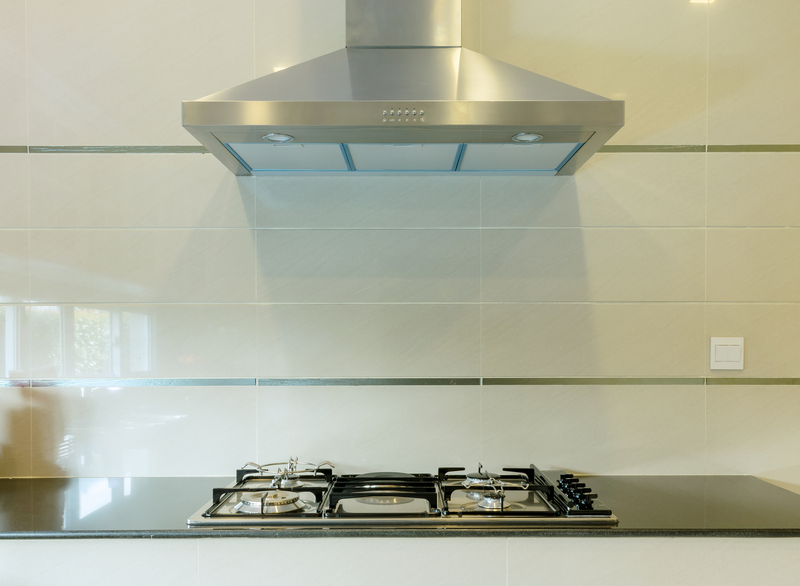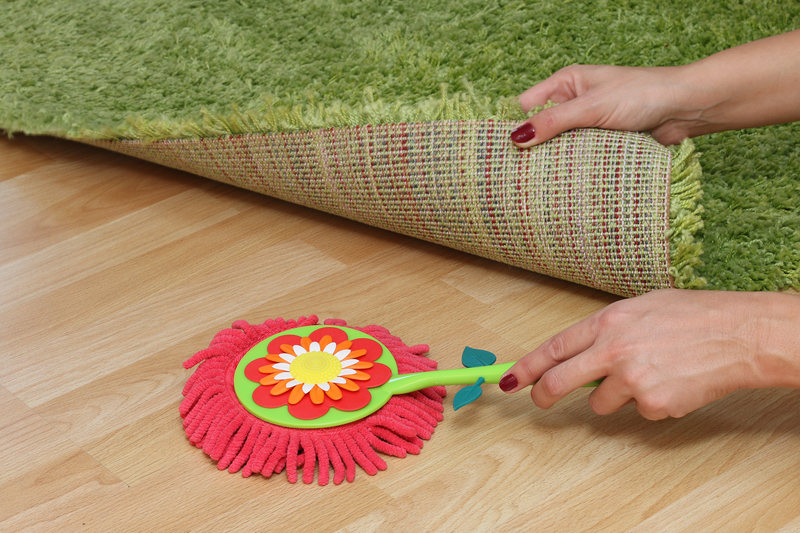Maintaining a Pristine, Mold-Free Bathroom
Posted on 02/10/2025
Maintaining a Pristine, Mold-Free Bathroom: The Ultimate Guide
A pristine, mold-free bathroom is more than just visually appealing--it's essential for a healthier home environment. Mold thrives in bathrooms due to high humidity and infrequent maintenance. If left unchecked, it can not only ruin surfaces but also pose serious health risks. In this comprehensive guide, you'll discover effective, expert-backed strategies for maintaining a spotless, mold-free bathroom that always feels fresh and welcoming.
Why Bathroom Mold is a Persistent Problem
Bathrooms are particularly vulnerable to mold due to frequent use of hot water, limited airflow, and porous surfaces. Mold spores flourish in moist, poorly ventilated areas, causing unpleasant odors, allergies, and even structural damage.
- Health Risks: Mold exposure can trigger allergies, asthma, and respiratory issues.
- Property Damage: Unchecked mold can deteriorate tiles, grout, walls, and ceilings--leading to costly repairs.
- Unpleasant Odors: Mold produces a musty smell that degrades your bathroom experience.
Understanding these risks highlights the importance of maintaining a clean, mold-free bathroom in your home.

Essential Steps to Maintaining a Mold-Free Bathroom
1. Prioritize Proper Ventilation
One of the most effective ways to prevent bathroom mold is by ensuring adequate air circulation. Steamy, stagnant air is a breeding ground for mold and mildew.
- Install an Exhaust Fan: Make sure your bathroom has a working exhaust fan to remove humid air during and after a shower. Clean the fan periodically for maximum efficiency.
- Open Windows: Leave windows open for at least 15 minutes after bathing to let steam escape and fresh air enter.
- Leave Doors Ajar: Prop bathroom doors open to promote airflow and dry out damp areas.
Remember: Proper ventilation is a non-negotiable aspect of keeping your bathroom mold-free.
2. Use Moisture-Resistant Materials
Selecting the right materials can significantly decrease your bathroom's susceptibility to mold. Focus on moisture-resistant paints, tiles, and sealants for walls, ceilings, and floors.
- Semi-Gloss or Gloss Paints: These are less absorbent and make cleaning easier.
- Porcelain or Ceramic Tiles: Offer durability and resistance against moisture absorption.
- Mold-Resistant Caulk: Use around tubs, sinks, and backsplashes to prevent water seepage.
Investing in these mold-resistant choices will pay off in long-term cleanliness and reduced maintenance.
3. Practice Routine Cleaning
Regular, thorough cleaning is crucial for maintaining a flawless, mold-free bathroom. Mold spores settle on soap scum, body oils, and residues left unattended.
- Daily Wipe-Downs: Use a squeegee or microfiber cloth to wipe down shower walls, floors, and glass doors after use. This simple act drastically reduces moisture buildup.
- Weekly Scrubbing: Disinfect sinks, tubs, toilets, and tile grout with a bathroom cleaner that targets mold and mildew. Pay special attention to corners and crevices.
- Monthly Deep Cleans: Focus on lesser-seen spots: behind the toilet, under sinks, air vents, and inside cabinets.
Consistency is key--set reminders if needed, and involve the entire household in the cleaning routine for effective bathroom maintenance.
4. Keep Surfaces Dry and Clutter-Free
Mold loves hidden, overlooked surfaces. By keeping your bathroom dry and organized, you eliminate tempting spots for mold to settle.
- Hang Towels Promptly: Never leave damp towels or bathmats bunched up--air them out after use.
- Declutter Shelves and Floors: Remove unnecessary items, as clutter traps moisture and blocks airflow.
- Check Under Bottles: Shampoo or soap bottles left on wet surfaces can develop hidden mold beneath them--lift and wipe regularly.
5. Tackle Leaks Immediately
Even the smallest leaks can foster subtle yet persistent water accumulation, ideal for mold colonization. Regularly inspect all plumbing:
- Check Under Sinks: Look for dripping pipes, musty odors, or water stains.
- Examine Fixtures: Periodically check around faucets, toilets, and bathtubs for seepage.
- Seal Cracks and Holes: Use a high-quality, mold-resistant caulk to prevent moisture intrusion.
If you find a leak, address it immediately by replacing gaskets, tightening fittings, or calling a professional plumber. Fast action is vital for maintaining mold-free bathrooms.
Proven Products and DIY Solutions for a Mold-Free Bathroom
Recommended Mold Removal and Prevention Products
- Antifungal Sprays: Use reputable brands designed for bathroom use--apply them regularly on problem areas.
- Mold-Resistant Paint: Paints formulated with antimicrobial agents keep surfaces protected.
- Dehumidifiers: These devices are especially helpful in windowless or persistently humid bathrooms.
Natural, DIY Cleaning Solutions
If you prefer eco-friendly or less harsh options, try these natural alternatives:
- Vinegar Spray: White vinegar kills and prevents mold--spray directly onto affected surfaces and leave for an hour before scrubbing.
- Baking Soda Paste: Mix baking soda with water to make a mild abrasive paste--use it on grout, tiles, and around sinks.
- Lemon Juice: Natural acids in lemon are effective against light mildew growth and leave a fresh scent.
- Hydrogen Peroxide Solution: Mix a 3% solution as an antibacterial treatment for severe mold patches.
Apply these solutions regularly as part of your bathroom cleaning routine for best results.
Strategic Design Choices for Mold Prevention
If you're renovating or building a new bathroom, a few thoughtful design considerations can make maintaining a pristine, mold-free space much easier:
- Opt for Larger Tiles: Fewer grout lines mean fewer places for mold to grow.
- Choose Open Shelving: Promotes airflow compared to closed cabinets.
- Elevate Toiletries: Use floating shelves or wall-mounted racks to keep bottles and soaps off wet surfaces.
- Install Good Lighting: Mold prefers darkness; ample lighting discourages growth and makes cleaning easier.
The Importance of Caulking and Sealing
Sealing joints and seams protects from moisture infiltration--a common source of hidden mold. Inspect caulking around your tub, sinks, and windows annually. Replace any sections that appear cracked, peeling, or discolored.
What If Mold Appears? Steps for Safe and Efficient Removal
Despite best efforts, occasional mold growth may occur. Here's how to minimize risk and remove it promptly:
- Wear Protective Gear: Gloves, masks, and eye protection prevent exposure to spores.
- Isolate the Area: Close doors and open a window if possible to increase ventilation.
- Apply Cleaner: Use a commercial mold remover or one of the DIY solutions listed above.
- Scrub Thoroughly: Use a stiff-bristled brush on tiles, grout, and caulking.
- Dry Completely: Mold returns quickly to damp surfaces--wipe down and air out after cleaning.
- Monitor: Check the area frequently to ensure mold doesn't return.
Persistent, wide-spread mold may require professional remediation. Don't hesitate to call an expert if you notice black mold or if mold is spreading rapidly.
Bonus Tips: Healthy Bathroom Habits
Developing simple, proactive habits helps keep your bathroom pristine and mold-free on a daily basis:
- Always run the exhaust fan during baths and for 20 minutes afterward.
- Rinse and hang bathmats and towels outside whenever possible to ensure full drying.
- Avoid storing paper products (like tissues) in humid environments.
- Check shower curtains and liners regularly; washable, mildew-resistant options are best for long-term freshness.

Frequently Asked Questions About Mold-Free Bathrooms
How can I tell if my bathroom has a hidden mold problem?
Look for subtle signs such as musty odors, peeling paint, persistent damp spots, or unexplained staining on walls and ceilings. Hidden mold often starts under sinks, behind walls, and beneath floor mats.
What is the best way to disinfect bathroom surfaces?
Use a non-abrasive bathroom cleaner with antifungal properties. For natural cleaning, a mixture of vinegar and water is both effective and safe on most tiles and glass.
Can plants reduce bathroom mold?
Some houseplants, like ferns and peace lilies, help absorb moisture and purify air. However, overwatering can exacerbate humidity, so be mindful not to overdo it.
Is bleach effective against mold?
Bleach can kill surface mold on non-porous materials but isn't as effective on porous surfaces, where mold roots can remain. For long-term prevention, address the underlying moisture issue.
Conclusion: A Forever Fresh, Mold-Free Bathroom
Maintaining a pristine, mold-free bathroom doesn't need to be a challenge when you adopt the right habits, cleaning schedule, and products. Keep surfaces dry, ventilation strong, and clutter to a minimum. Prioritize bathroom hygiene, act swiftly on leaks, and choose materials and sealants designed for damp environments. With consistent care, your bathroom will stay sparkling clean, inviting, and--most importantly--healthy for everyone in your home.
Start implementing these expert tips today for a bathroom that's always immaculate, mold-free, and comfortable!





